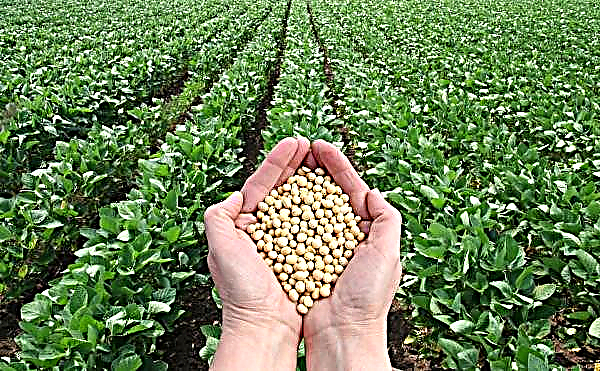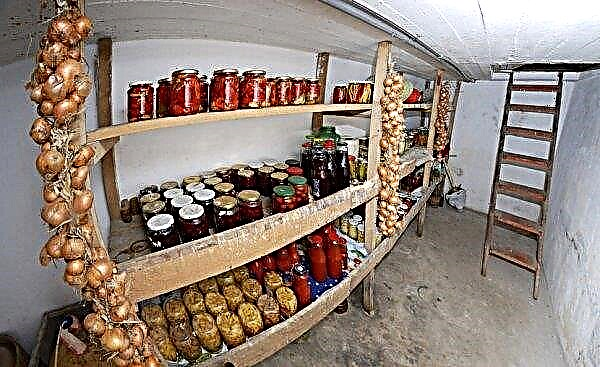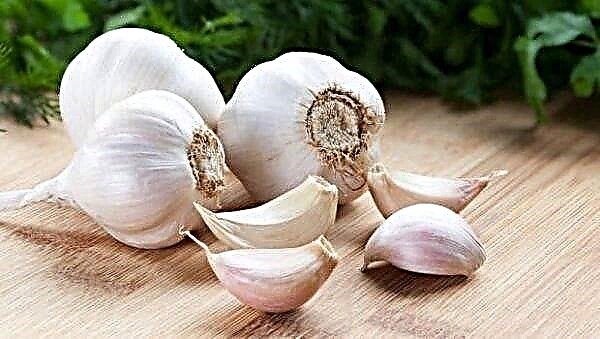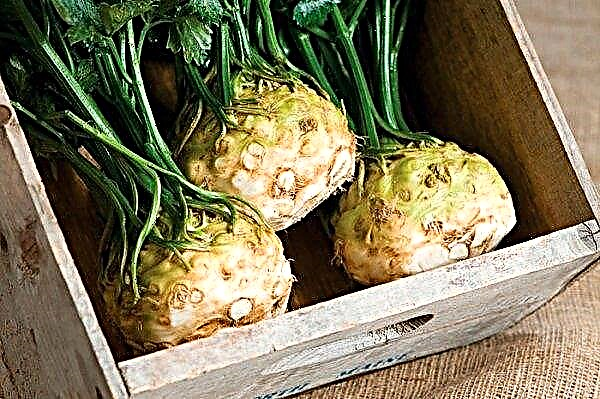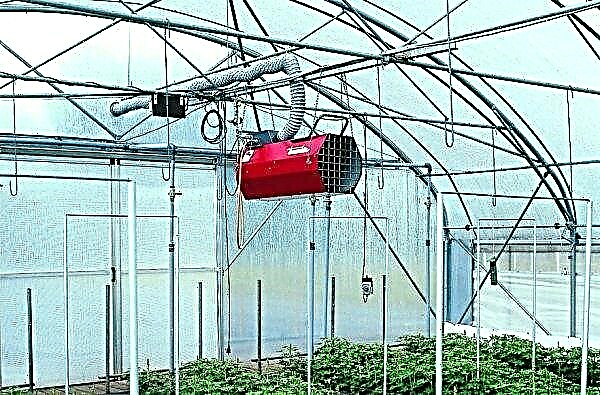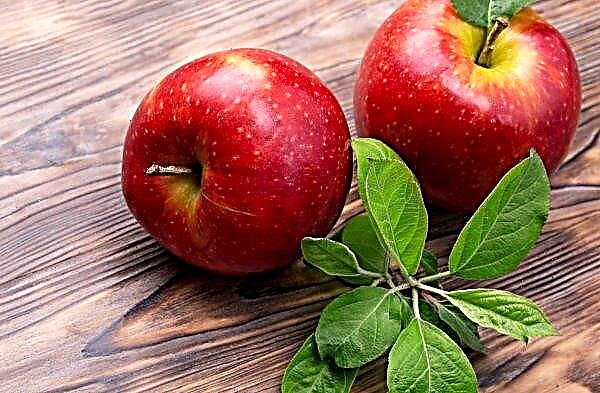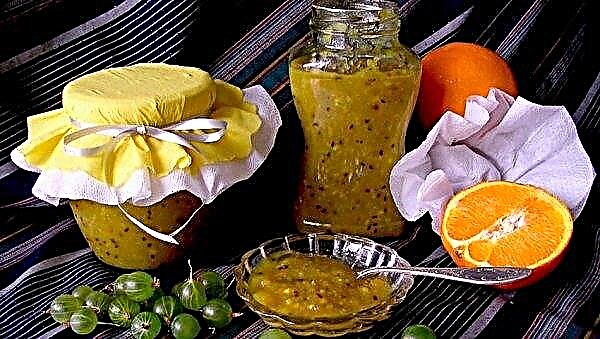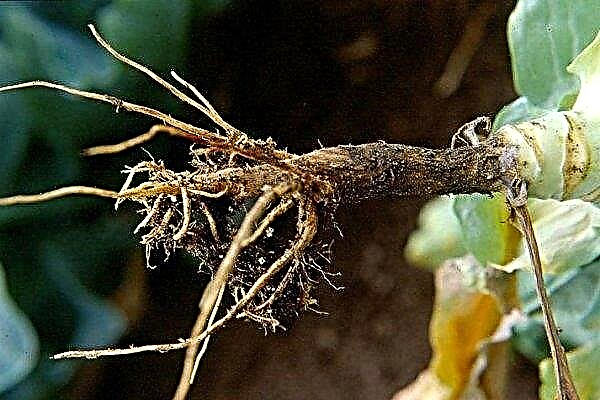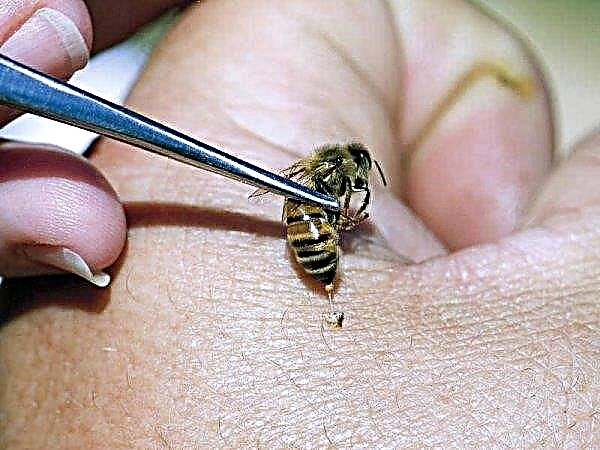Winter radish is a fairly new and ambiguous phenomenon. Agricultural technology planting radishes in winter in open ground or in an unheated greenhouse has both its supporters and opponents. The former are encouraged by the opportunity to get a vegetable on their table much earlier, and the latter are afraid of the risks of freezing seeds during wintering in the soil. Read more about planting radishes under the winter in the greenhouse, read on in the article.
Radish planting in autumn
The main point of planting radishes in autumn is the possibility of harvesting in spring as early as possible, which is especially evident when planting vegetables in the winter in an unheated greenhouse. But you have to take some risk.
Did you know? The well-known characteristic of radishes, according to which it is red on the outside and white on the inside, is only partially true. In fact, it can also be white-red, pink, yellow, purple and even pure white.
Benefits
- The advantages of this agricultural technology for growing root crops are:
- early harvest ripening;
- the acquisition by a vegetable of resistance to cold, disease and pests;
- the natural stratification that seeds undergo during wintering, as a result of which the strongest specimens survive, giving the best yield;
- protection from the main pest of radish - cruciferous flea, which wakes up after the ripening of winter radish.
Disadvantages
- The disadvantages of this agrotechnical method of growing vegetables are:
- the possibility of a mistake with the timing of sowing, which directly affects the success of growing winter radishes;
- danger of freezing seeds in the soil during excessively cold winters.

How to plant radishes in the greenhouse before winter
Planting seeds of this root crop in an unheated greenhouse practically does not differ from sowing seed material in open ground. However, the greenhouse has an advantage, since the soil and air in it warm up earlier in the spring. As a result, there you can get a crop of winter radishes a month earlier than when planting a vegetable in spring: a fresh vegetable can get to the table already in April, when during spring planting its seeds are still sown in the soil.
What varieties are best planted
The main requirements that apply to radish varieties for winter planting are frost resistance and the ability not to leave the arrow under sharp temperature fluctuations.
The best varieties of radishes meet these requirements:
- Heat;
- Spartacus;
- Dawn;
- Anniversary;
- Pink red;
- Carmen
- Mercado;
- Lighthouse.

Landing time
Accurately determining the planting period of winter root crops means most of the success in its cultivation. If heat returns to the soil after planting, the seeds can germinate early, which means their subsequent certain death during the winter. Therefore, landing work must be combined not with certain dates, but with real weather and its forecasts in a particular region. Most often, this root crop is planted in late November.
Important! Experienced vegetable growers recommend planting winter radishes in the ground, the top layer of which is 3 cm frozen.
Bed preparation
Since the seeds are best sown in frozen soil, the garden bed for this vegetable must be prepared ahead of time.
You should not choose for her a place where previously grown:
- radish;
- cabbage;
- turnip;
- watercress.
It is best to grow radish after:
- Tomatoes
- legumes;
- potatoes;
- cucumbers.

The best substrates for growing this vegetable consist of a mixture of:
- turf and greenhouse-greenhouse land in equal proportions;
- dung humus - 60% and field land - 40%;
- dung humus - 40%, soddy soil - 40% and lowland peat - 20%;
- turf land - 40% and dung humus - 60%.
On the prepared bed, you need to dig grooves in several rows in advance, because after freezing the soil it will be problematic to do this.
Seed selection and preparation
Available seed before sowing in the soil is subjected to the following operations:
- Using a sieve with 2 mm cells, the seeds are calibrated, discarding small specimens.
- Disinfected to prevent fungal diseases with a red solution of potassium permanganate for half an hour.
- To protect plants from dry rot, the seeds are kept in hot water for a third of an hour.
- Be sure to dry them before planting, because when wet they are able to hatch in the soil.

Scheme and depth of landing
The depth of the grooves into which the seeds are sown should be at least 2 cm and a maximum of 5 cm. The distance between the seeds is 5 cm and between the rows is 20 cm. As already mentioned, exclusively dry seed material is sown, which is dusted on top again with a dry substrate.
Important! When sowing seeds before winter, they need 2 times more than during spring sowing, as during the wintering process some of them will inevitably freeze.
Further care
After winter sowing, the bed does not need to be watered, but it should be insulated. To do this, use a mulching layer and a coating of fir spruce branches or garden non-woven material. It is better not to use straw and leaves as a mulching material, since they accumulate moisture, which is extremely undesirable for winter seeds.
Tips from experienced growers
Experienced gardeners recommend:
- To better distinguish seeds against the background of the soil during sowing, they need to be treated with a 1% iodine solution for several minutes, then sprinkled with chalk and dried.
- Do not feed radish beds with fresh manure, as this provokes the plant to leave the arrow without the formation of a root crop.
- A dense planting of a vegetable does not increase, but, on the contrary, reduces the yield, therefore, additional seeds that have been germinated during winter sowing for safety purposes need germination.
- It is convenient to make properly located seed holes by deepening the protruding parts of the egg trays into the substrate.
Did you know? Radish is such a common and popular vegetable that it could reach space. It is grown on the International Space Station, where it is in demand due to the short growing season and the ability to use all parts of the plant for food.
The winter sowing of radishes in the greenhouse is gaining popularity because it allows you to harvest in the spring much earlier than during spring planting. Some risk arising from this does not detract from the undoubted advantages of this method.

